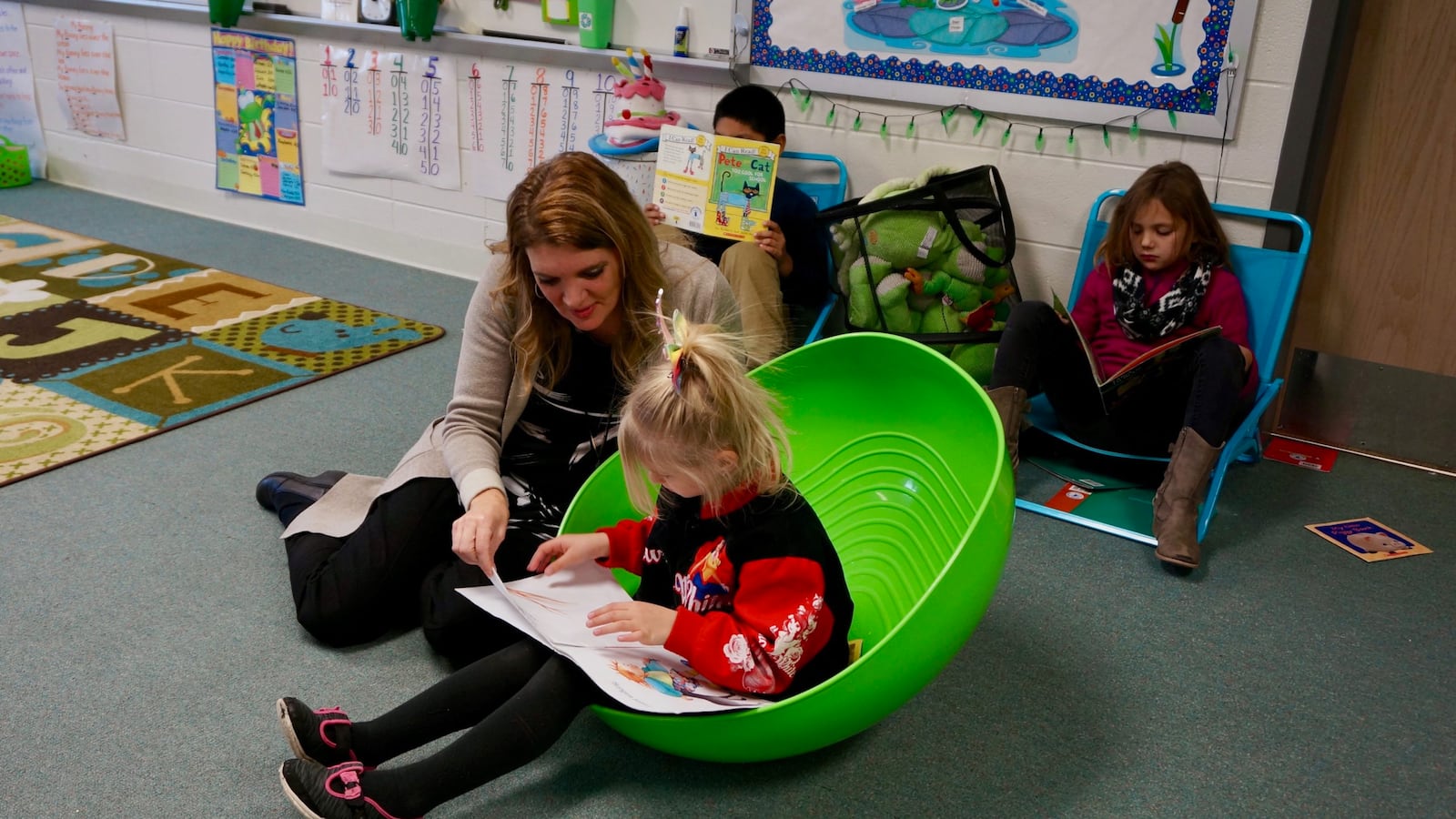For more than a decade, teachers in Indianapolis Public Schools have come and gone. Students have grown from kindergartners to high schoolers. What has not changed during that time is the English curriculum provided to many of the district’s middle and high school teachers.
That’s because, amid years of budget freezes, it’s been about 12 years since the school system adopted a new English curriculum for secondary schools and seven years for elementary schools. Officials said every six years is a typical window for selecting new curriculum — a costly endeavor for any district. Newer curriculum is important because the options are more likely to be aligned with state standards, which were chosen in 2014, and include more diverse student experiences.
For educators, the aging materials have meant they must supplement, for example by coming up with their own writing assignments and plans for discussing novels. And for students, it’s meant reading books that are sometimes worn with use.
Indianapolis Public Schools, however, is aiming to roll out new English curriculum for kindergarten through 12th grade as soon as next school year.
“It’s going to be a huge win for both teachers and students,” said Amanda Koth, director of instructional design and support for the district, who noted teachers will also get trained to use the new curriculum. “This is just a big stepping stone into providing great quality instruction.”
The move comes at a time when curriculum is getting renewed focus from national education leaders and advocates. During a public interview to lead the district, Superintendent Aleesia Johnson cited her work on spearheading this overhaul of the district English curriculum as one of her accomplishments as deputy superintendent.
This year, 11 schools across the district are piloting several English curriculums for elementary, middle, and high school grades. Indianapolis Public Schools officials plan to use what they learn to help decide what material to adopt across the district. Because the district has many schools that have independence in their academic approach, such as specialized magnet programs, campuses sometimes use other materials.
Packaged programs like those the district is looking to purchase typically include an array of materials, such as texts that students read, assignments, and lesson plans.
At School 46, a K-8 school on the southwest side with about 400 students, Principal Allyson Peterkin said teachers had all but abandoned the older curriculum for many grades. In early grades, they are not satisfied with the reading instruction, said Peterkin. It only asks kindergartners to memorize eight sight words. Typically, students that age are expected to memorize 50-60 words. In middle school, the books were outdated and tattered.
As a teacher, Peterkin liked to create her own materials, translating research on phonics, for example, into work for her students. But now that she is principal of School 46, Peterkin wants educators in her school, which is also known as Daniel Webster, to have a good curriculum to start with. That’s because Peterkin doesn’t want teachers who don’t have the time or interest in making class materials to feel like they are forced to — or to reach for curriculum shared online that might not be high-quality or backed by research.
“What I’m looking for with this pilot is really finding a great foundation that we use 80% of the time, and the teachers really know how to supplement,” Peterkin said.
For Kimberly Meyers, a first-grade teacher piloting the new curriculum at School 46, it’s a relief not to feel like she has to develop or pull together her own materials to teach English well.
“It was frustrating because I didn’t feel like I had enough time to do so,” said Meyers. With the curriculum she is piloting — Into Reading by Houghton Mifflin Harcourt — she is using many of the readings and lessons it includes. “I feel like I can still add my knowledge to it or my ways of teaching it.”
There are challenges to using a new curriculum, though. Over the five years that Anthony Holabird has taught middle school English at School 46, he’s developed his own lessons and assignments based on district guidelines for what students should be learning throughout the year. “That freedom let me do something I was interested in and the kids got interested in,” he said.
This year, he is piloting a new curriculum called Wit & Wisdom with his seventh-grade class. It’s been a challenge for the students to learn the new approach, which requires them to keep three separate notebooks and toggle between working on their own, in small groups, and as a whole class, Holabird said. He’s also significantly behind schedule on the lessons in part because they are designed for 90-minute periods and he doesn’t know them well enough to know what to leave out.
But he is enthusiastic about the quality of the material, from the questions students contemplate to the activities they do to the novels they read.
“Everything feels pretty important. Everything ties back,” Holabird said. “There’s not a lot of chaff to cut out.”


